The first thing to say about Bangkok is that it’s hot. Properly so. We decided to walk the 1.5 miles from the station to the Vivit hostel (yes, that’s not a misspell, we’re staying in a hostel and it’s fab) as there was no suitable subway and we didn’t (yet) want to trust a taxi/tuk-tuk. That almost killed C and we managed to find a cafe with air-conditioning to regroup before the final assault on the hostel – which, BTW, is fabulous. Small room, shared facilities, but clean and with breakfast and WiFi for under £20.
Second, like Thailand, Bangkok is enigmatic. There’s real poverty here; you can see it from the train windows. Tin shacks with corrugated roofs, gaps filled with plastic bags and kids washing in streams. There’s rubbish and plastic away from the main streets, but in and around the makeshift houses, pride seems to keep order. The electricity supply is a bird’s-nest of black wires and there are stand pipes for some.
And yet on the beaten track things are more first-world. Thailand is a military dictatorship, disguised by a unitary parliament. It is the only SE Asian country not to have been colonised and has held onto its monarchy through military coups and recent, brief flirtations with democracy (quickly overcome by military intervention). Yet there’s no sense of subjugation – unless you consider a large swathe of v poor people as disenfranchised and put upon. Literacy rates are in the high 90s and Buddhism attracts over 95% of the population, which probably makes them more chilled out than your ordinary dictatorship – and they love their king. When the last one died the country went into mourning for a whole year. His pictures and appropriate flags and bunting are everywhere.
And much of the city looks prosperous, especially the military buildings. There are trains and buses, taxis and a metro. There are 7-11s (all air-conditioned, a really helpful fact when you’re wandering around in an open-plan oven), and the palaces and temples are like nothing I’ve ever seen before. They’re like Disneyland meets Claire Accessorize. The photos only touch on the story.
Oh, and they don’t use the Gregorian calendar. Nope. They use Buddha’s calender which is 543 years ahead of the rest of us, which can be a bit confusing when you’re using booking.con.
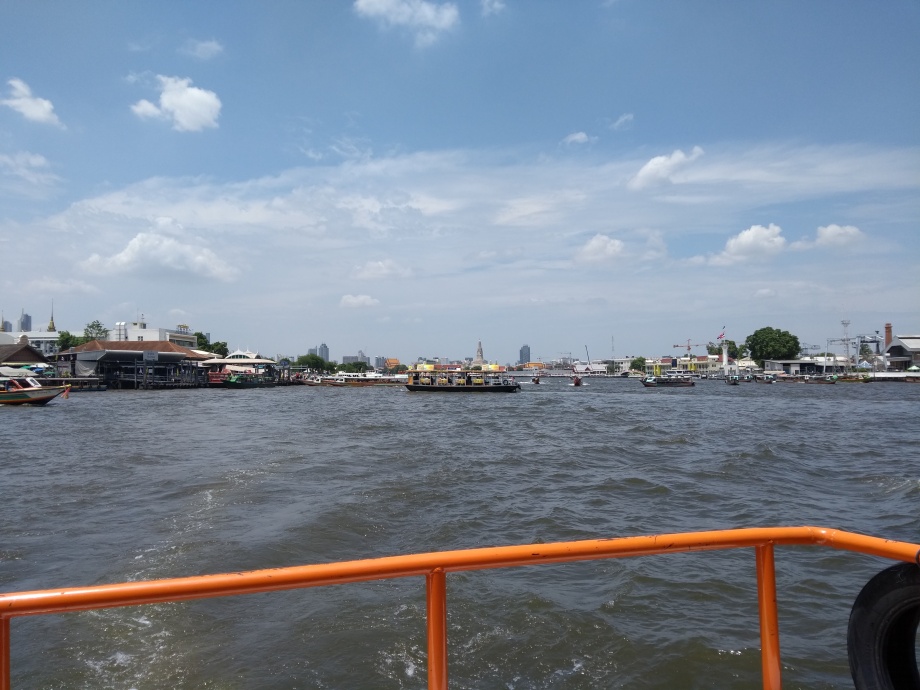
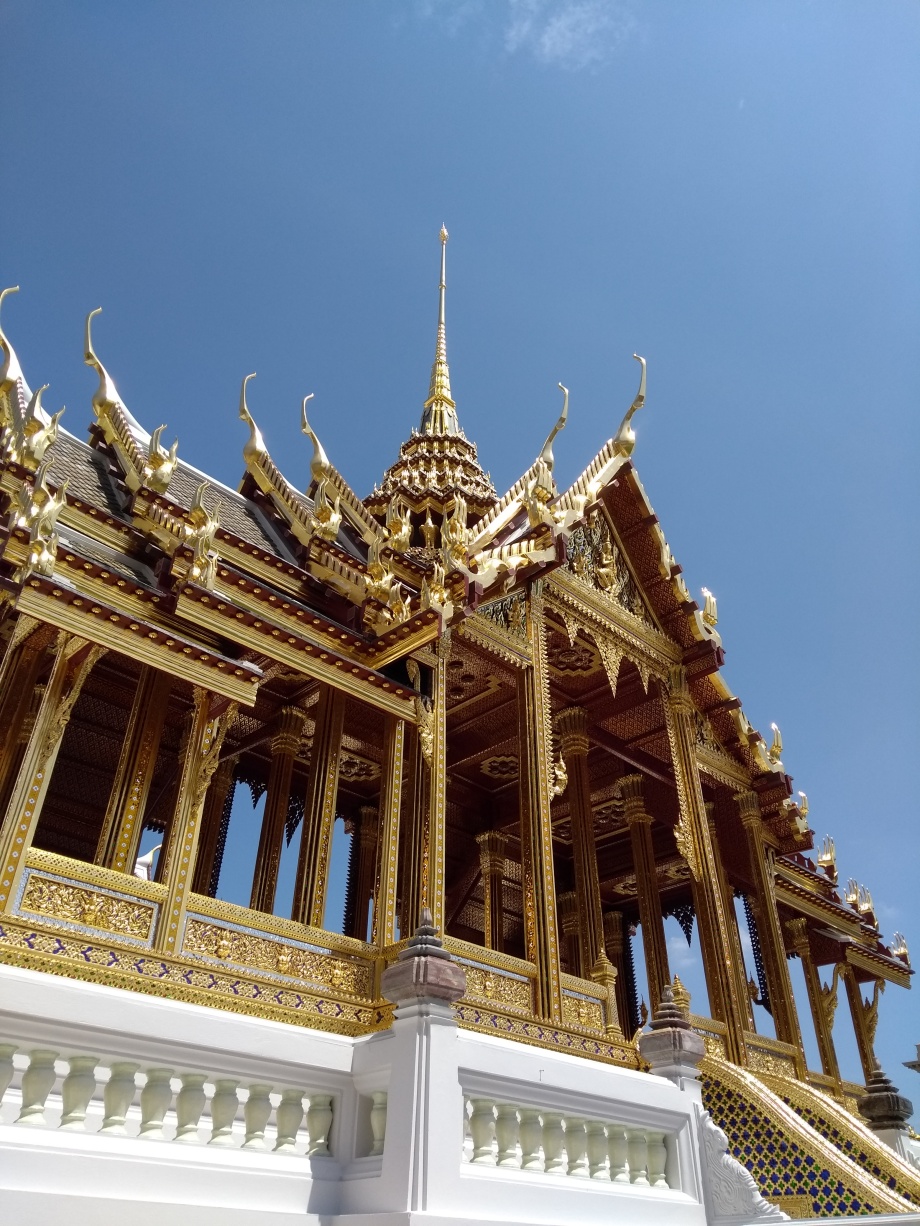
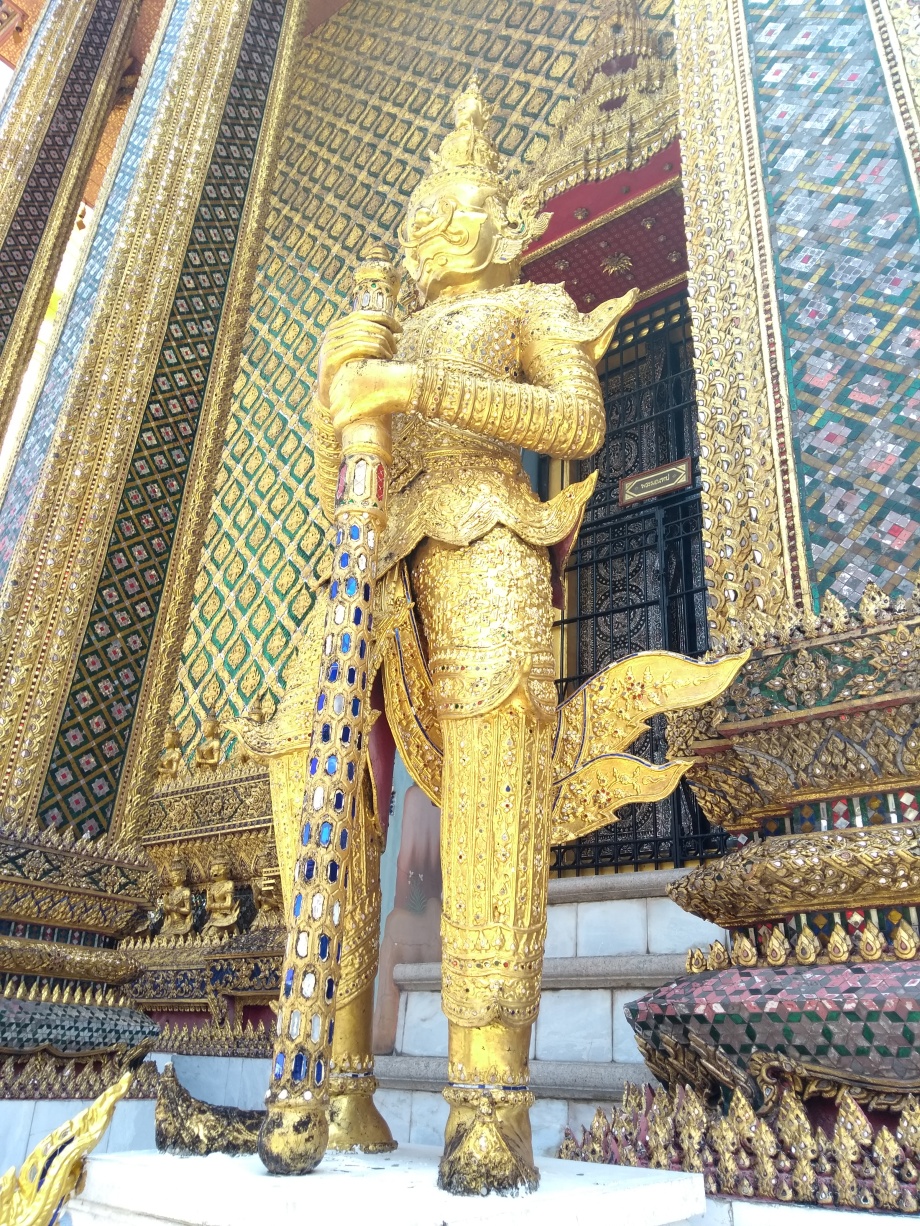
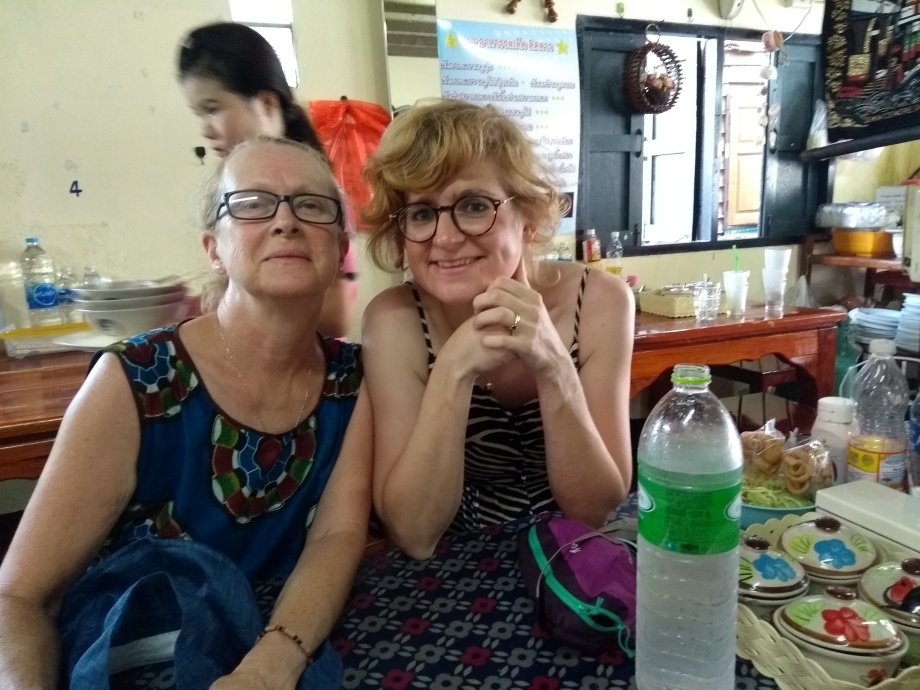
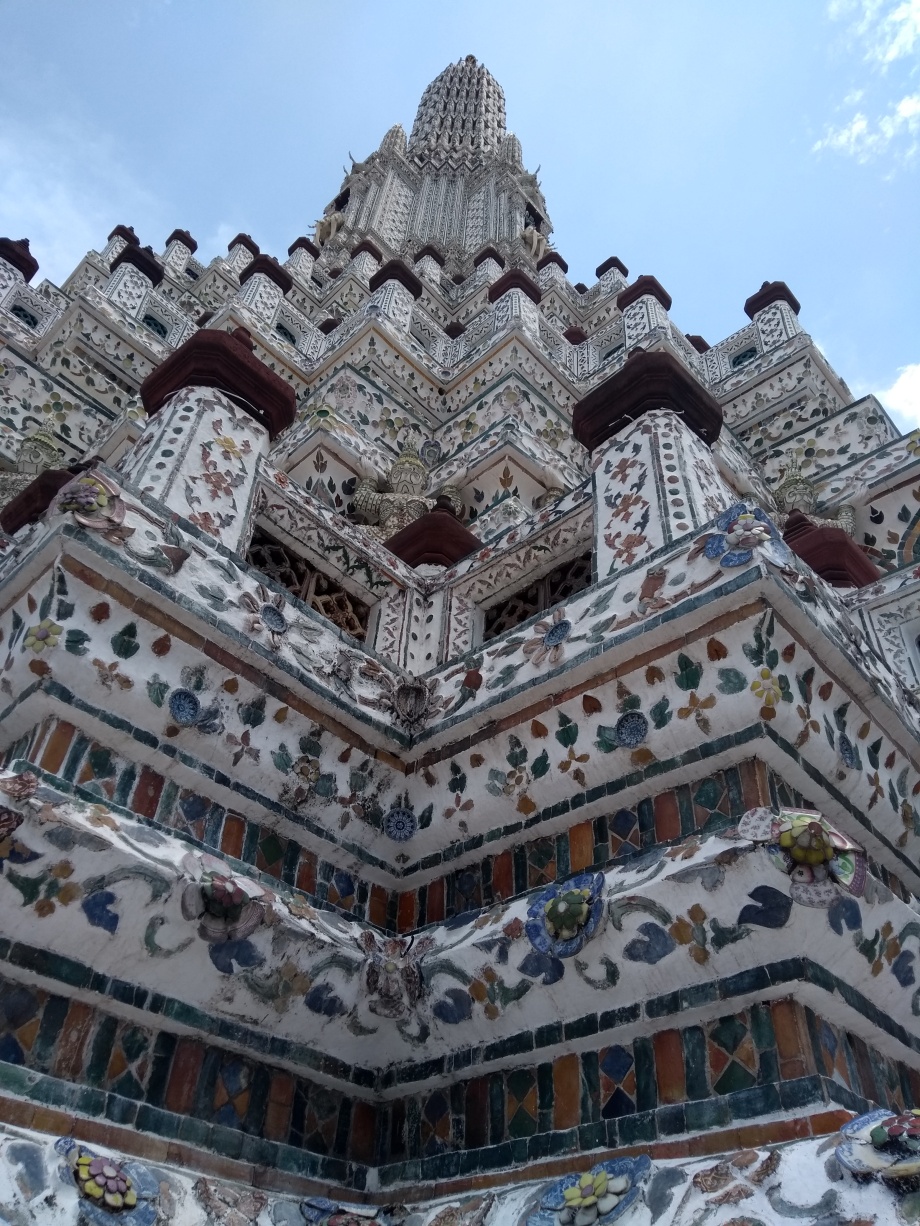
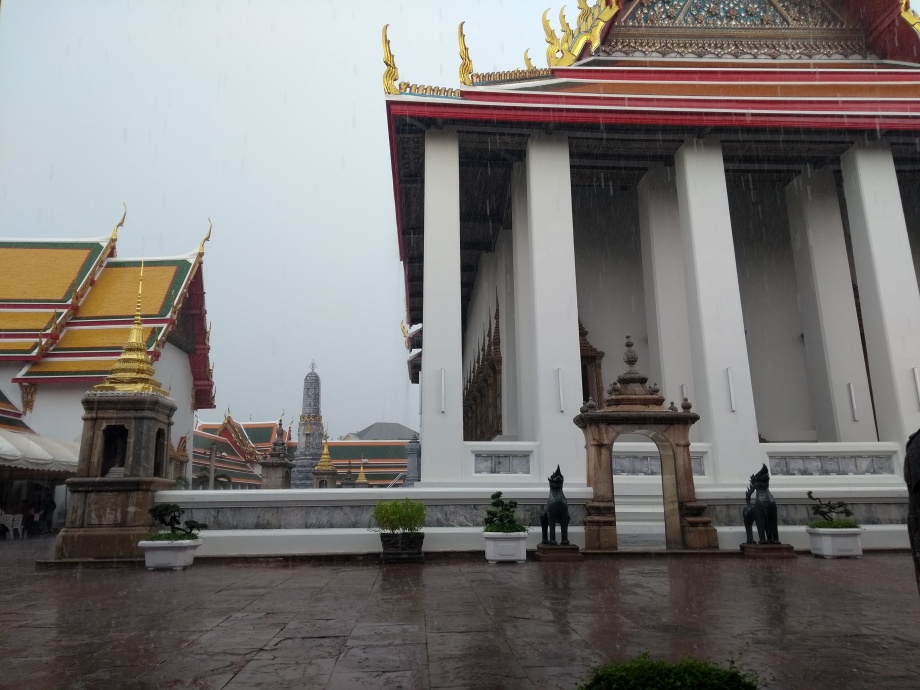
We walked out on Saturday night and found the main backpacking tourist areas and had supper. And on Sunday we did the palaces and temples, and a couple of river taxis … which ply the Chao Phraya River like demented waterboatmen. Fabulous. You must do the temples/palace if you come here, but if you’re really short of time visit the big gold lying down Buddha temple (it does have a proper name). It is special. And big. And lying down. And gold (leaf).
We spent late afternoon planning the next stage of our journey, which looks to be more adventurous still. But first …
… on Monday C and I broke away from Bex and Steven and caught an early train from a minor station in BK to Nam Toc, the end of the line for the poorly named Burma railway, as it travels through both Thailand and Burma. And, importantly, the bridge over the River Kwai (which isn’t actually the River Kwai and was called something else until the Thai government renamed it Kwai as the guy who wrote the book got the wrong river … which was difficult for tourist purposes … if you follow me), is definitely in Thailand.
Anyway we caught the train (£10 for both of us, return) that went to the bridge built by Allied PoWs and interned civilians during WW2.
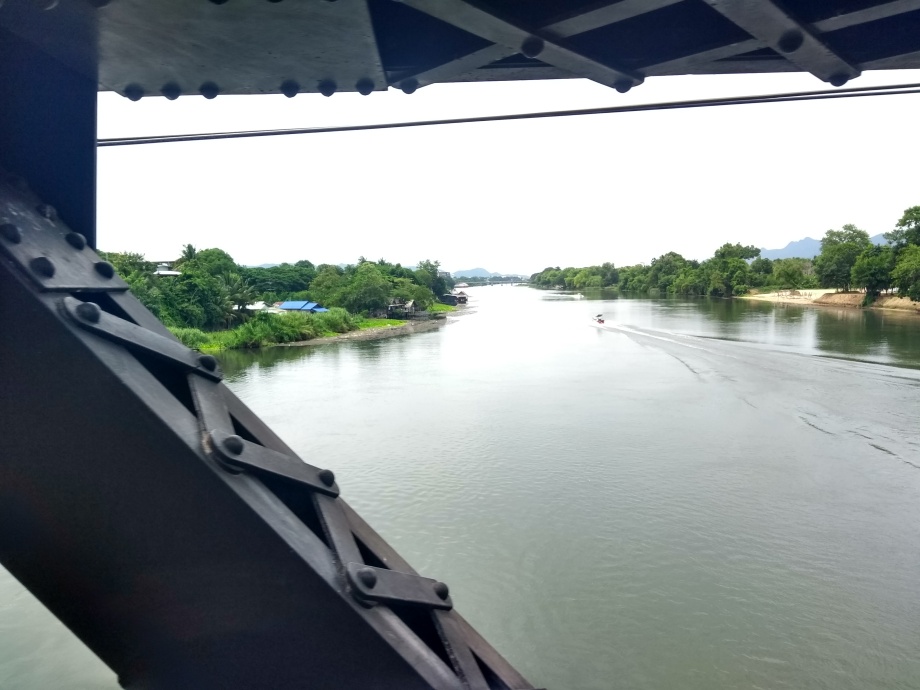
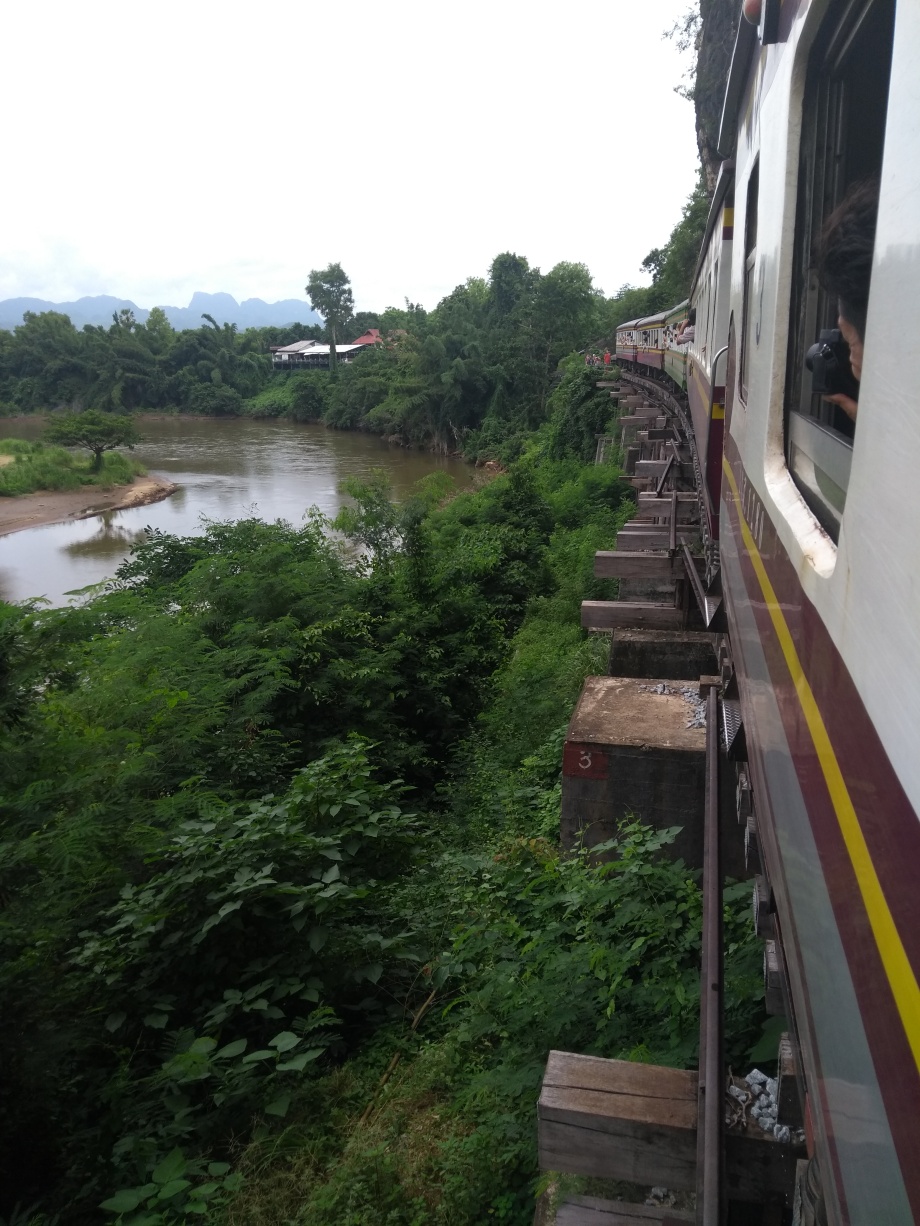
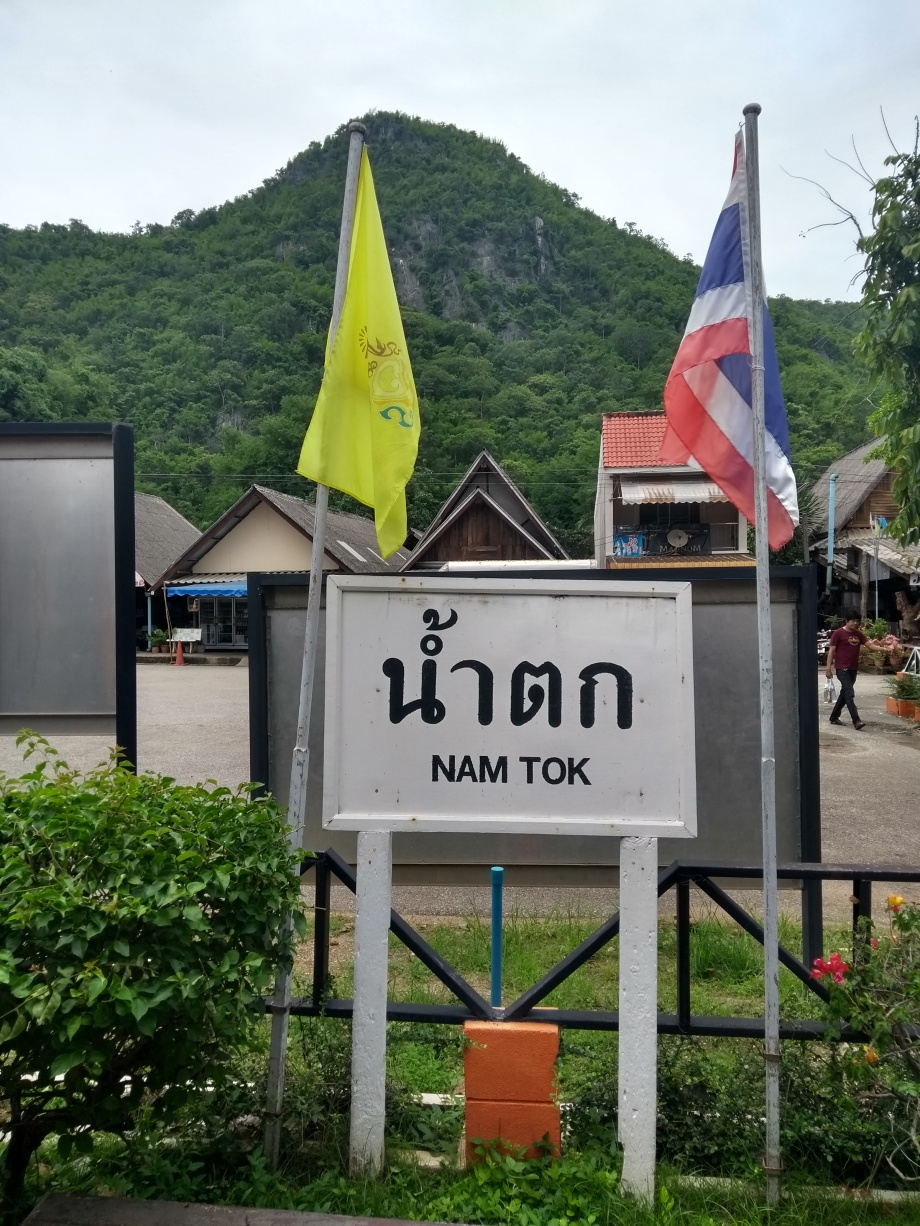
And it was fab. Up to Kanchanaburi (3 hours) the route is pretty dull; urban and busy. Beyond Kanchanaburi (a further 2 hours), where the train crosses the newly named Kwai on the same structure built in WW2, the landscape changes and it’s beautiful … arable land (cassava plants predominate, although C thinks they’re a cover for cannabis), crossed by mud-red tracks and well kept farmsteads. The railway cuts through these, as well as rocky and pointy, jungle covered hills, the viaduct at Wang Pho taking the biscuit.
In a suprise move to everyone we stayed on the train and then pottered back home again. Yes it was a bit hot in 3rd class (no a/c, but that meant you had the windows open and could experience everything) and I got time to reflect on the many, many beautiful temples en route set against all the poor people living in squalor by the tracks … and my organised-religion hypocritometer ratched up the scale a bit. So I stopped reflecting.
And after a very ‘cool’ night out with Bex and Steven, that’s Thailand, I think. We’ve still got 3 weeks left but the plan is Cambodia (by train and taxi … could be interesting) for a week and then two weeks in Vietnam. Apparently the Cambodian border can be a bit tricky.
I’ll let you know






